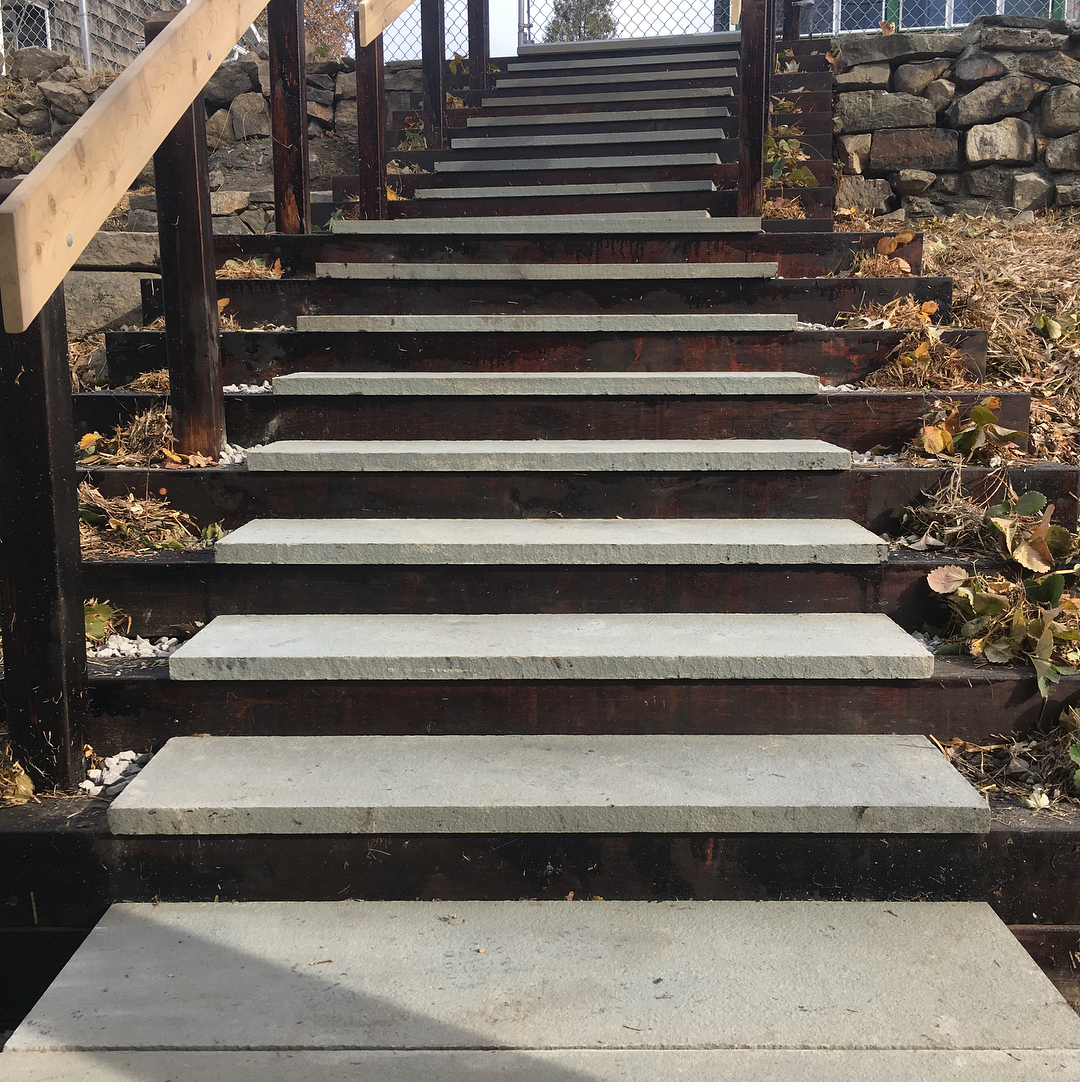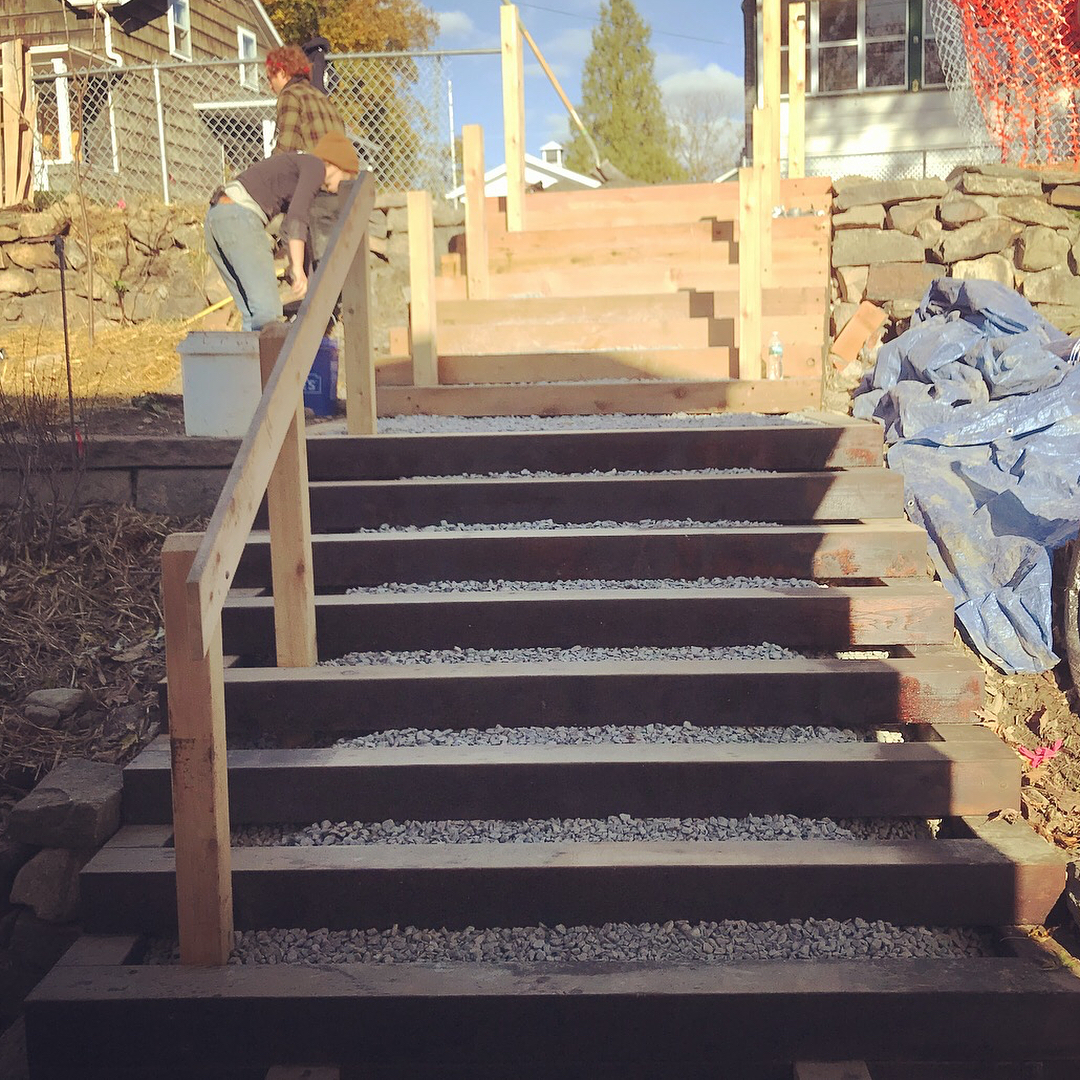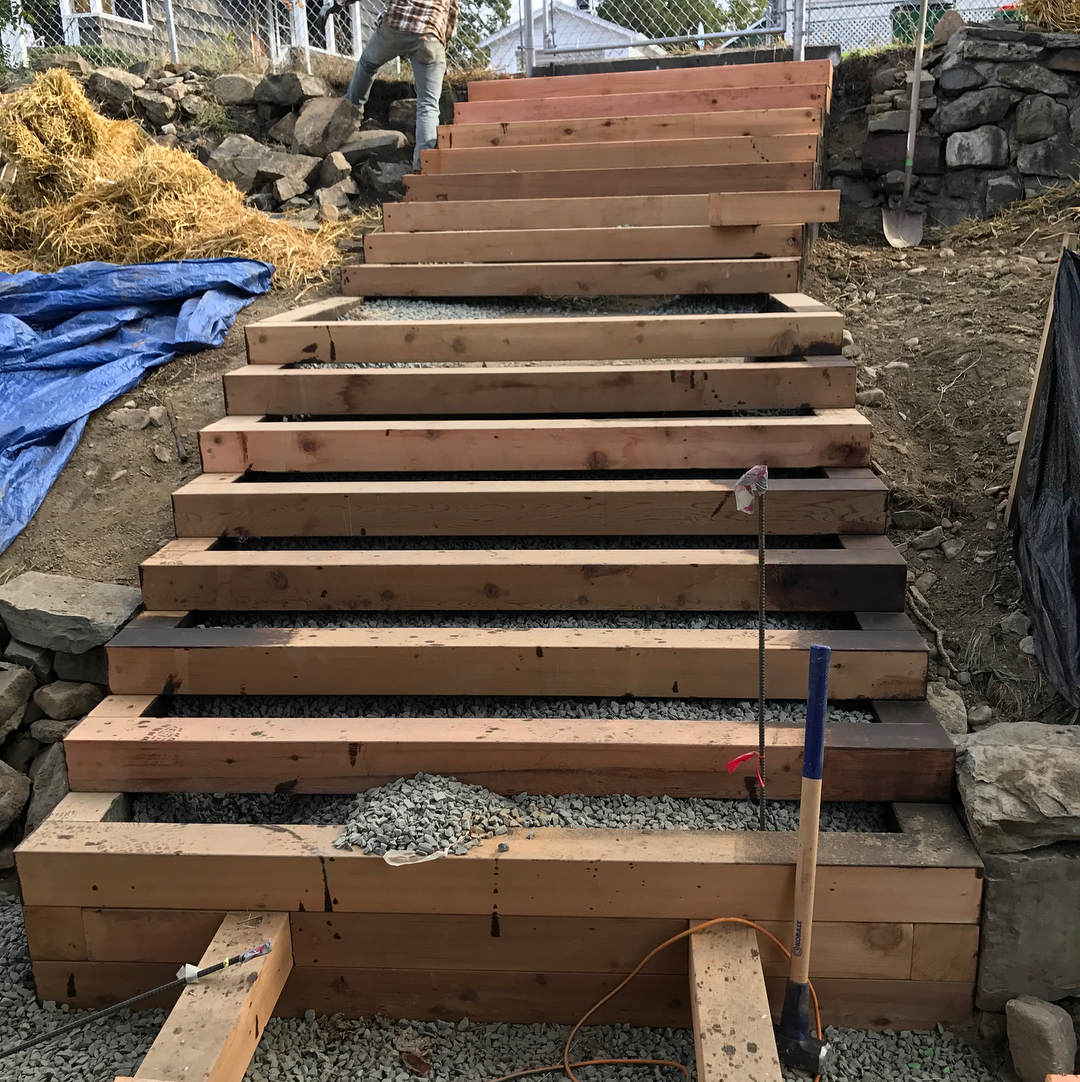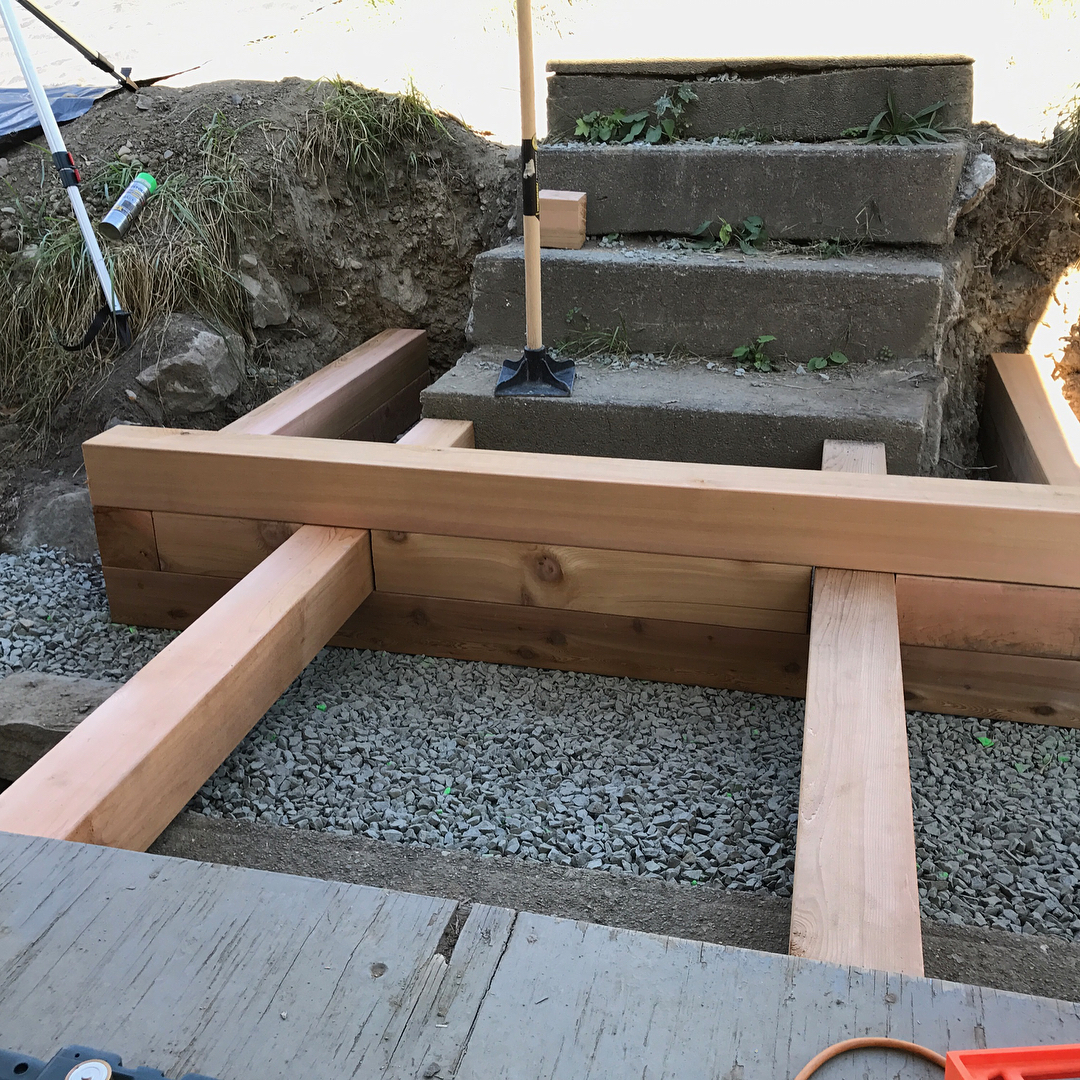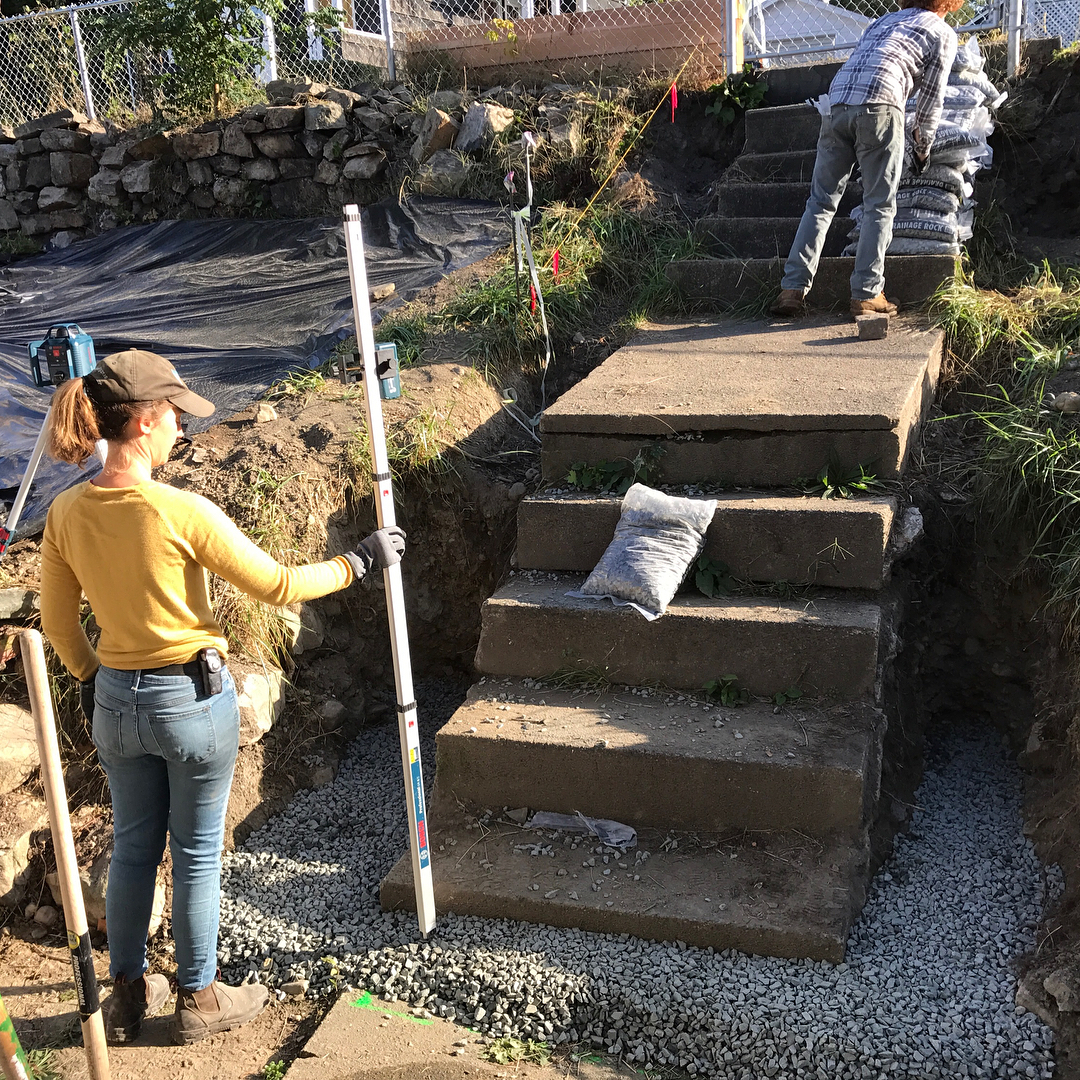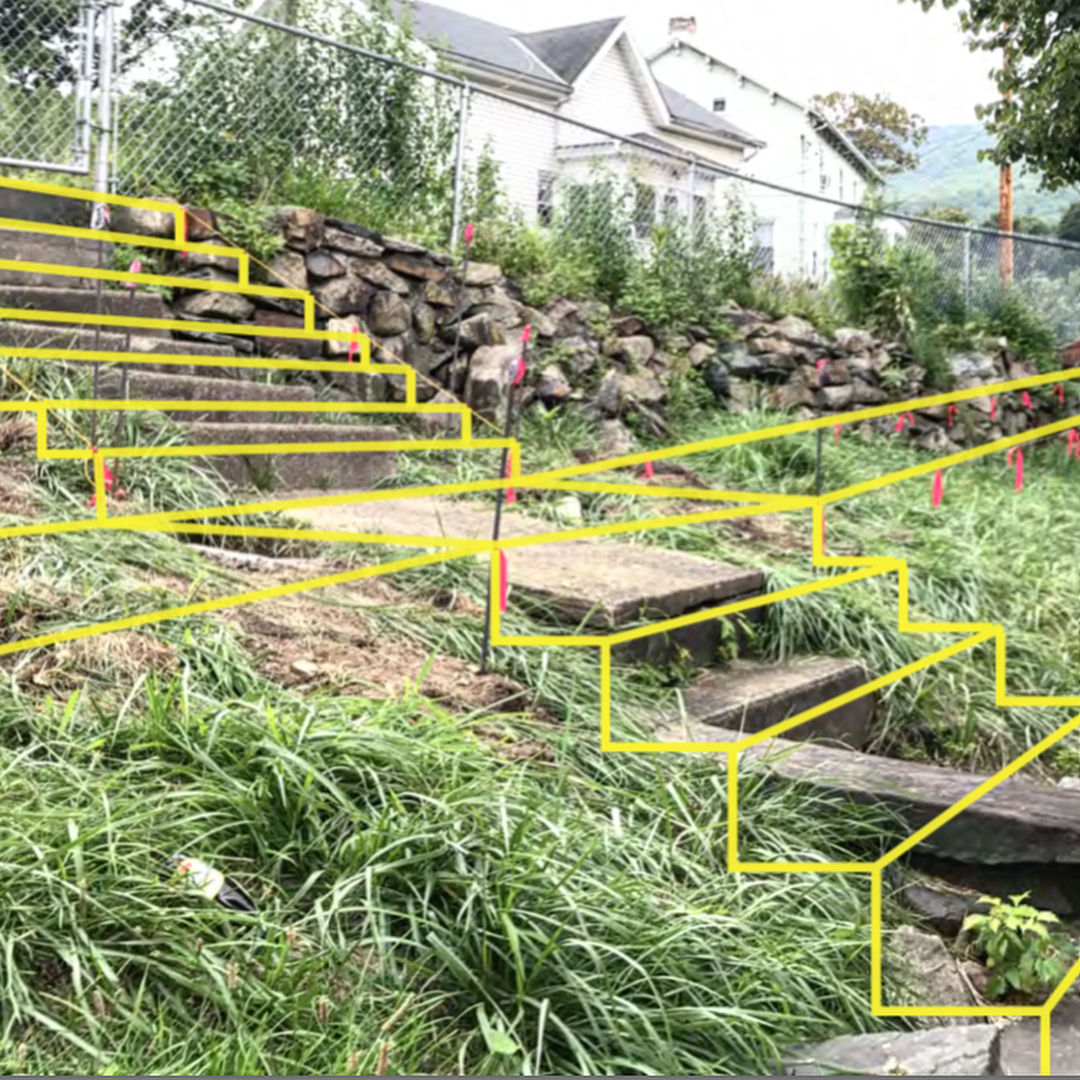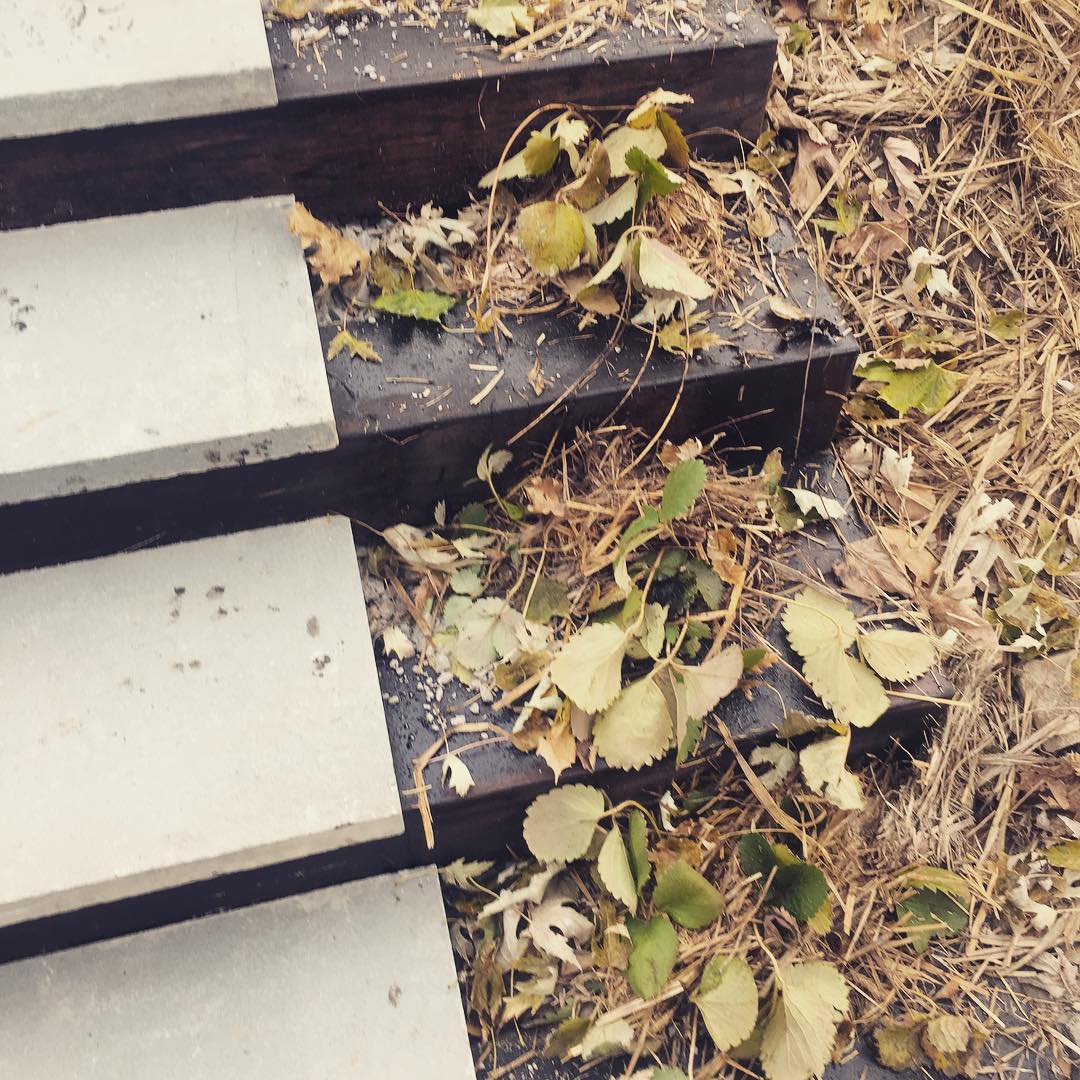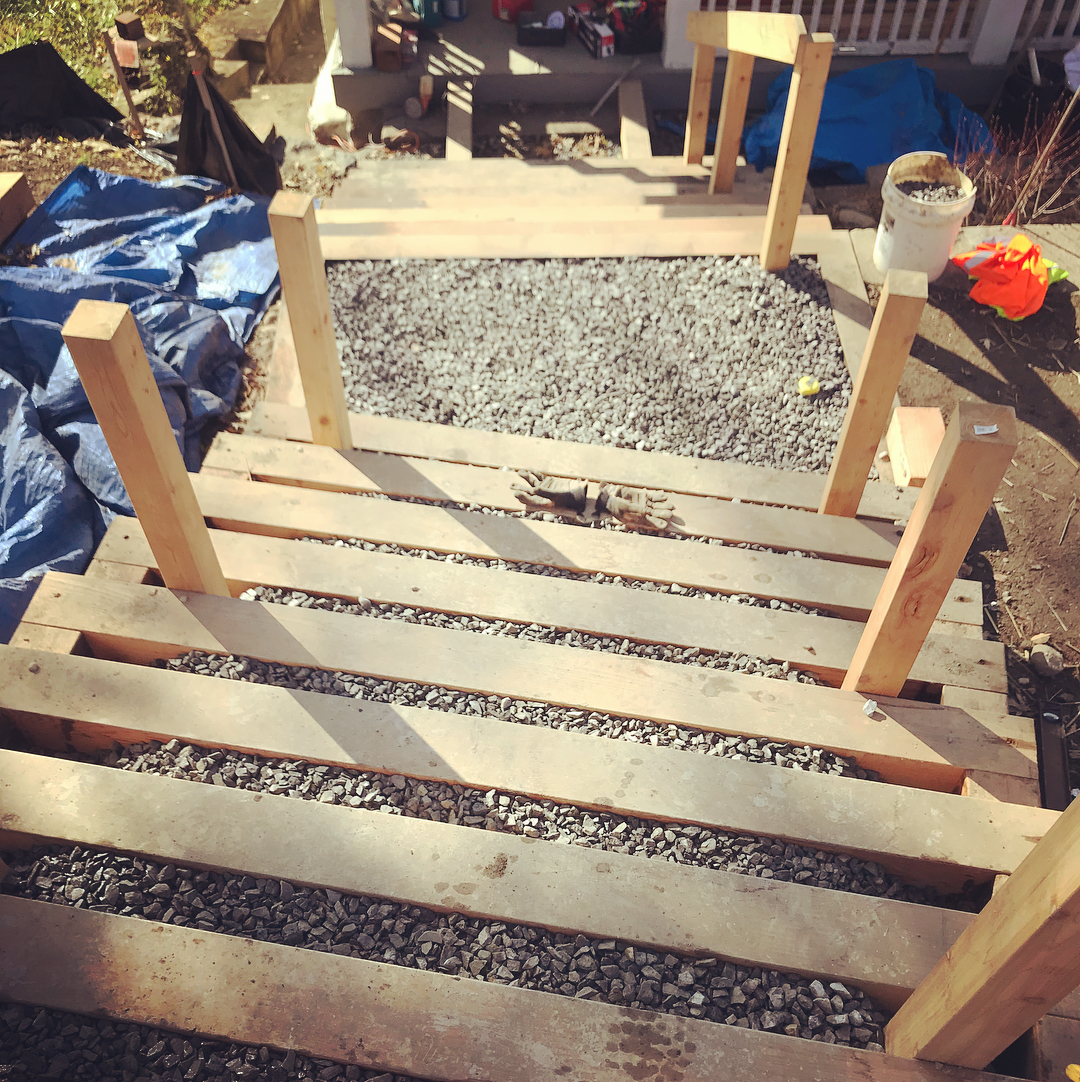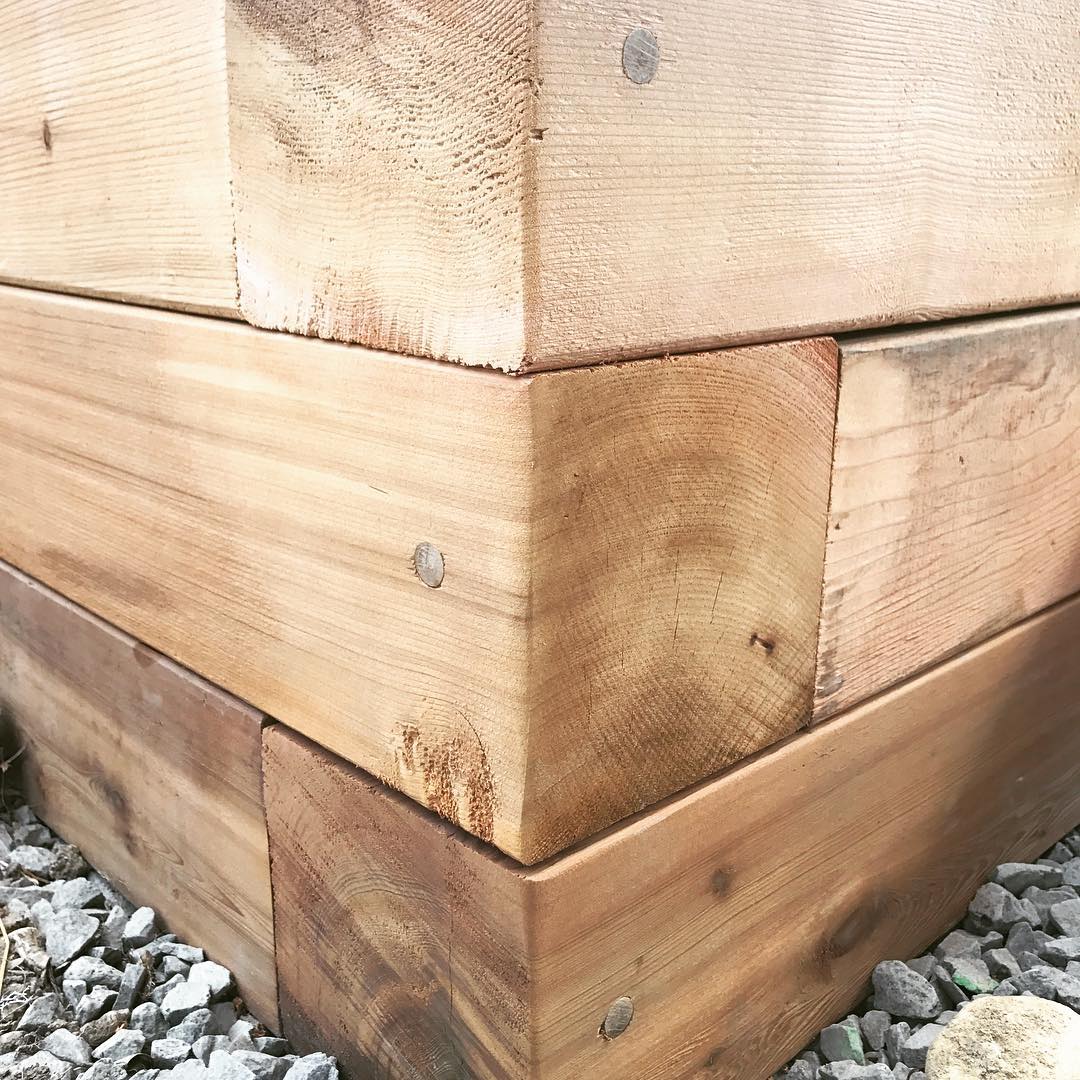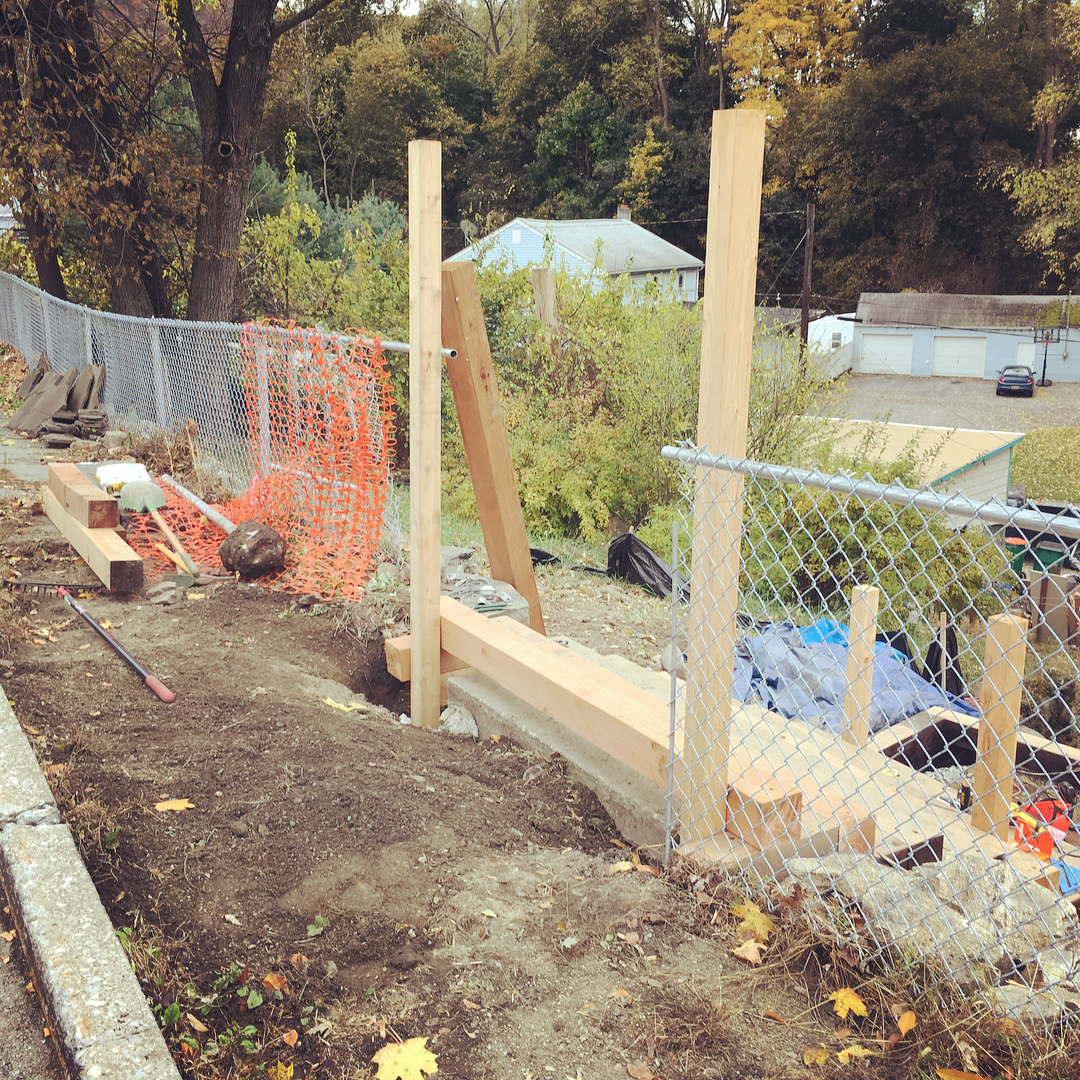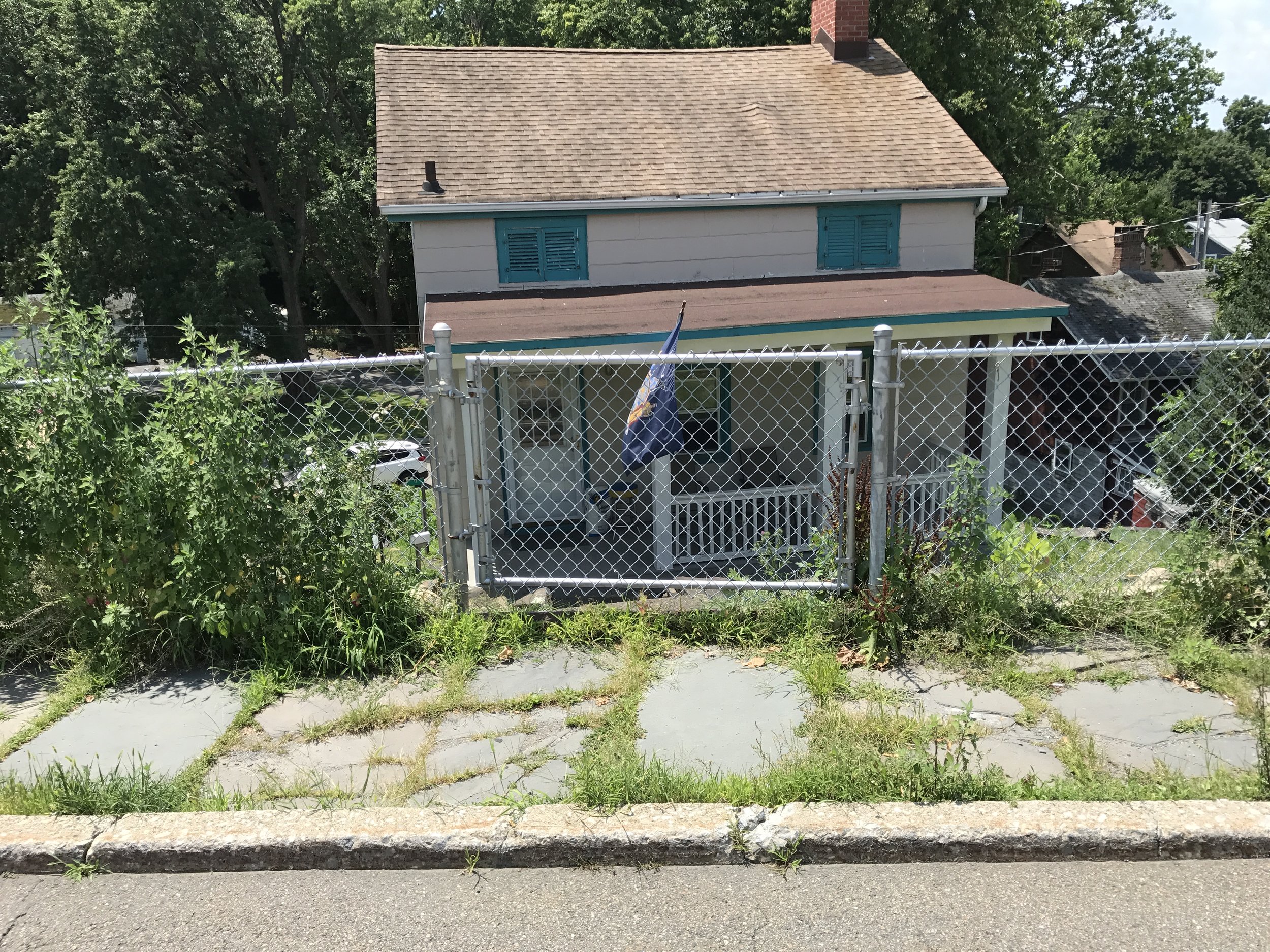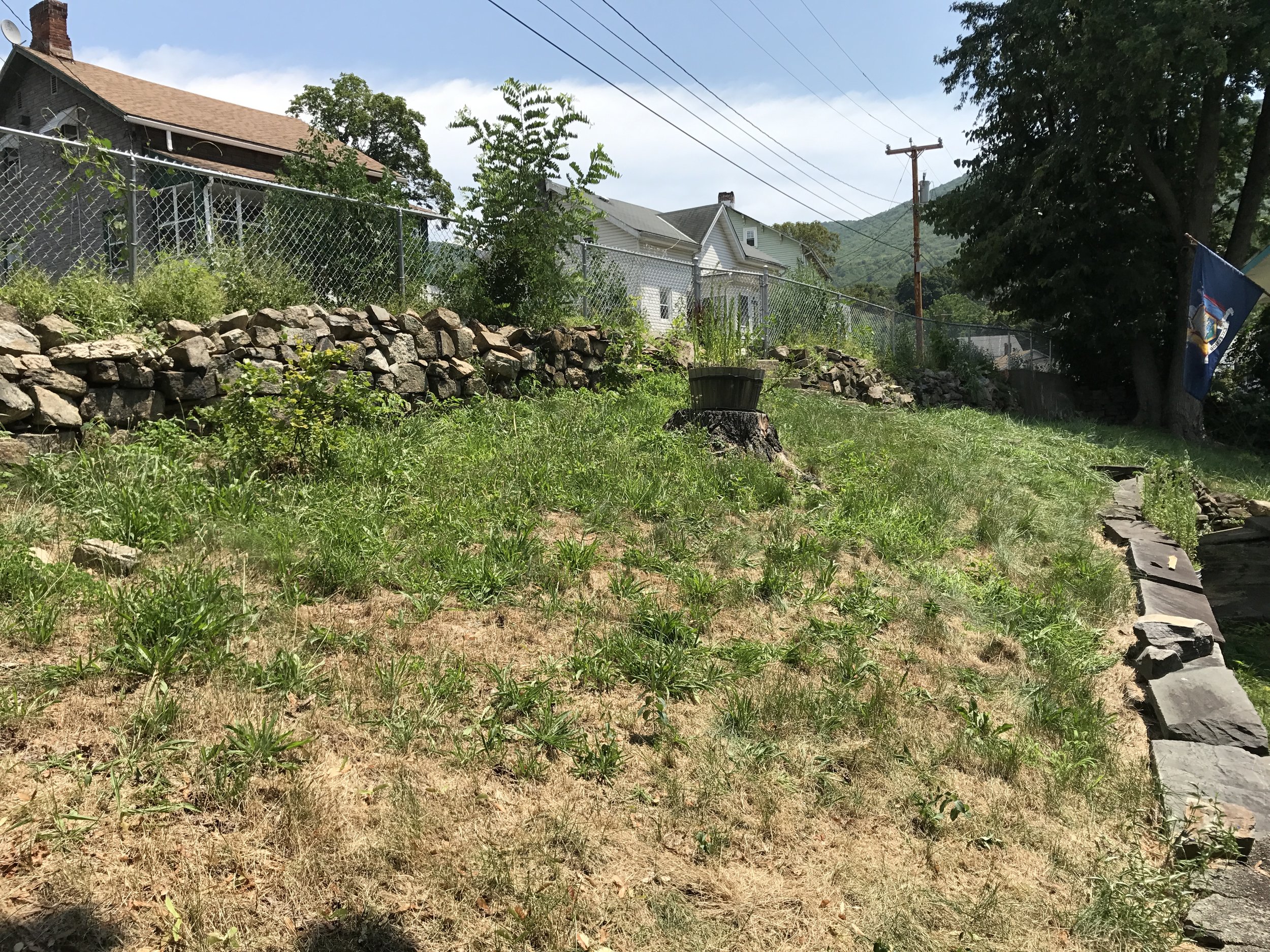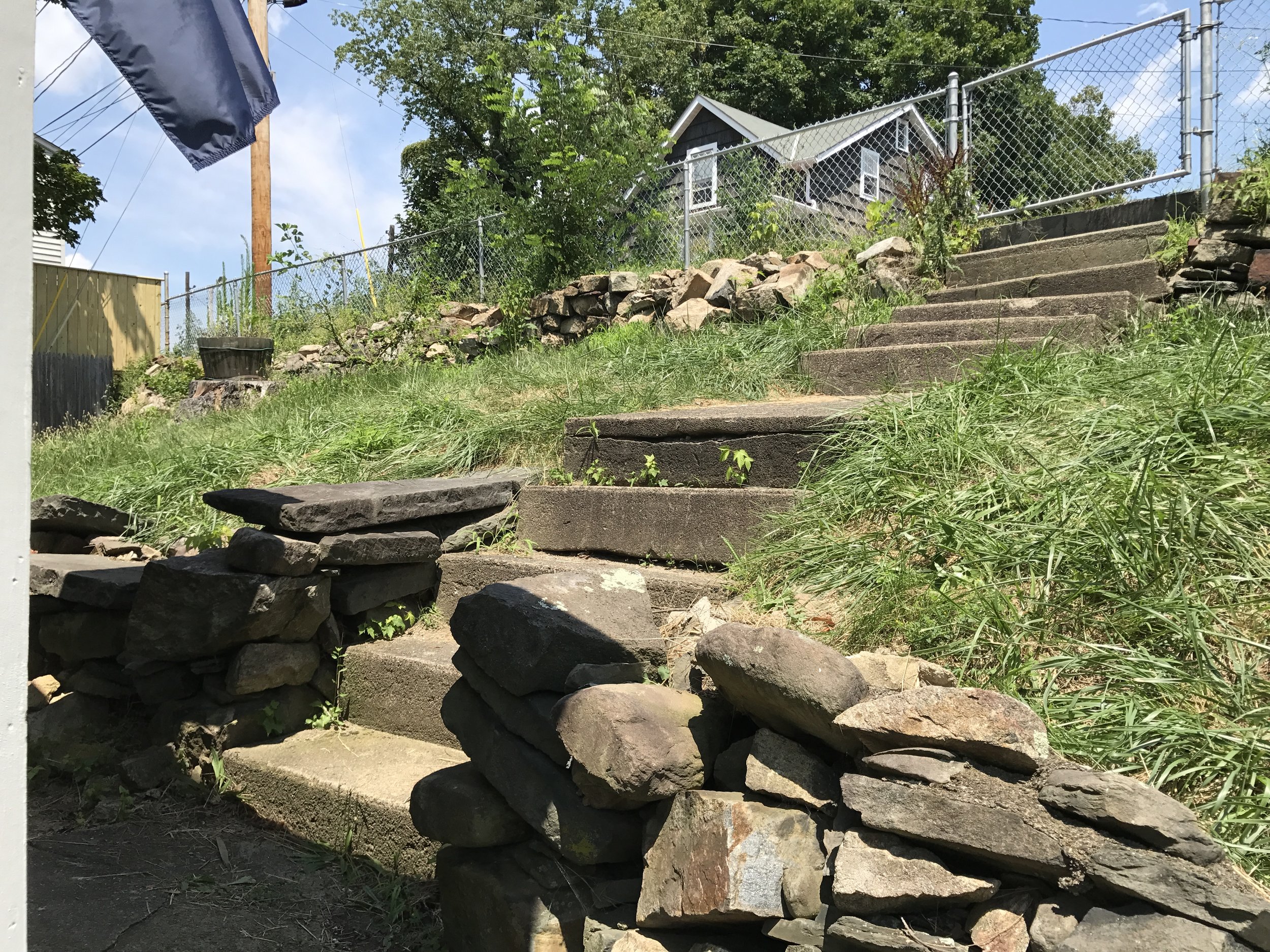Strawberry Staircases and Small City Permaculture
December 2017
With temperatures plummeting and the year near its conclusion, there is still plenty for the team at One Nature to be excited about, particularly the recent completion of a staircase and accompanying grove of trees at a residence here in our hometown of Beacon, NY. “The Staircase”, as it is affectionately known amongst the team, is the culmination of months of conception, diligent planning, and construction of a design that carries many of the trademarks that define a One Nature production.
Situated between East Main and Spring Valley street in Beacon is a sloping, terraced plot of land, in the center of which sits a gutted clapboard home. The property exudes great potential, as do many in the city, and it would appear that people are noticing: the property next door is undergoing major renovations as well, and it can seem at times like the entire block is under construction.
Scroll through the above image carousel to see how we built the strawberry staircase.
The task at hand did seem a bit daunting at the outset, given the somewhat decrepit state in which the team at One Nature initially found the property. A concrete staircase led from the back porch, each step out of level with the one previous, clunking upward, almost comically, to the street above. A stone retaining wall bordering the upper terrace, the future site of a small grove of trees, required considerable reconstruction. Apart from a long-deceased tree stump (which a local passerby related was haunted), the terrace was completely devoid of any vegetation. Indeed, the creative minds on the design and construction teams had a blank canvas to fill, an exciting prospect for all involved.
Initially, trenches were dug on either side of the existing structure to allow for 6-by-6 inch cedar railroad ties to be stacked as supports for cross-beams, which serve as the risers for the steps. Two courses were built to conceal the former concrete stairway, with the lower course leading straight up from the porch and leveling off into a landing. A gentle pivot after the landing shifts the staircase's perpendicularity to the porch to that of the street. Cedar was also chosen for handrails which line the staircase’s left side to its conclusion at the top. With only the steps themselves exposed, the natural-looking cedar looks like it grew there, as though if one were to dig it out, they would find it rooted into the soil. And as in the roots of a tree, the strength is in the substructure, the supports running deep underground on either side.
A philosophy of coexistence with the land informs One Nature's aesthetic as a designer of landscapes. In striving to create attractive, functional landscapes, the mission remains to do so in ways that enhance what the land has to offer, while also acting as a steward of the environment in the process. Thus, in selecting materials for the project, considerable attention was paid to ensure that not only were the materials used of the highest quality, but that they also reflected One Nature's commitment to using ecologically safe alternatives whenever possible.
The use of cedar, while beneficial for its long outdoor life as well as its resistance to extreme weather and pests, is also a highly sustainable wood. Renewable and biodegradable, it is immensely more eco-friendly than other building materials and many other woods, not to mention more attractive, possessing a sophisticated, yet rugged quality that ages well.
When it came time to choose a finish for the wood, the question arose again, of how achieve a beautiful result without compromising a commitment to using environmentally sustainable materials. The answer this time was a mixture of all-natural pine tar, thinned with turpentine, itself an oil derived from pine tree sap. Pine tar, long used as a water-repellent treatment for wood, not only provides added protection and longevity, but also imbues the beautiful grain of the cedar with a deep brown, earthen finish. The structure of the staircase was back-filled with drainage stone, and four-foot blue-stone treads were laid across each step, leaving room on either side for planters, in which strawberries were planted.
Members of the crew installing cardboard over lawn as we plant the hillside orchard.
With the staircase completed, the team’s refocused its attention on the accompanying landscape, implementing a concept for a small orchard consisting of nine various species of trees on the slope adjacent the staircase. The chosen assortment of native fruit and nut-bearing trees includes American Hazelnut, Sweet Cherry, Pear, and Pawpaw, all sourced from One Nature’s own nursery and available at our retail center on Main Street, here in Beacon. The Pawpaw, for the uninitiated, is a native species which produces a fruit roughly similar to a mango in appearance and taste, with a custard-like consistency. The wide variety achieved is a testament to how rewarding an edible landscape can be, utilizing only those species indigenous to our abundant Hudson Valley region.
It is with a sense of pride and accomplishment, as well as optimism for the future that One Nature leaves this project completed. As we turn our attention to projects currently in progress, we encourage you, the reader, to stay tuned for more updates and information regarding upcoming One Nature productions.

